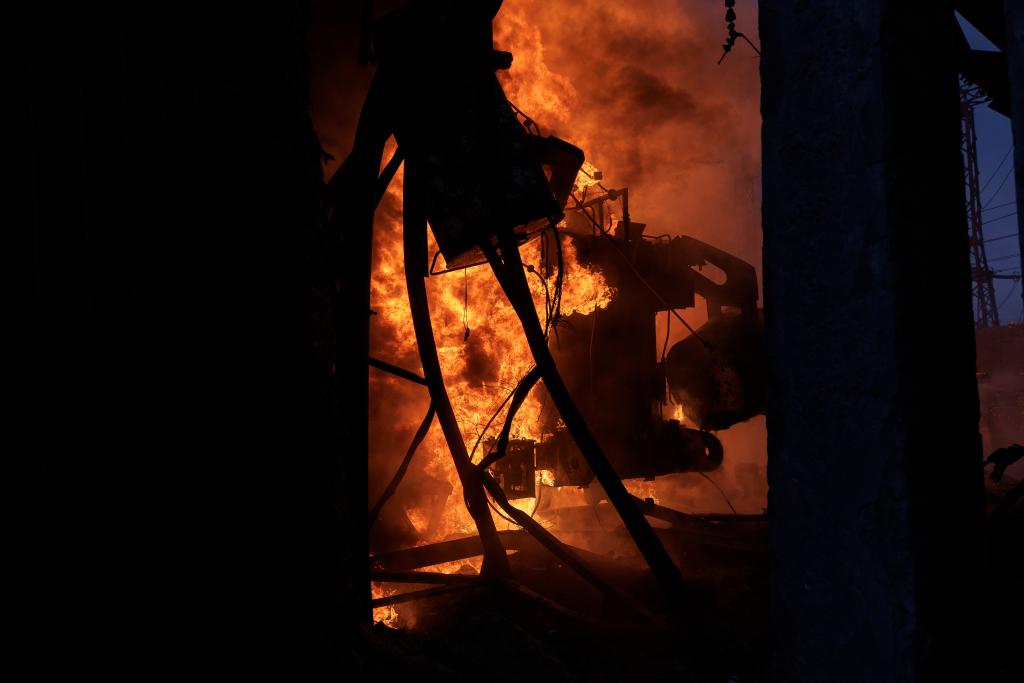Russia plunges Ukraine city into darkness after onslaught of drone, missile strikes on country’s infrastructure
Contact The Author
Russia blitzed energy infrastructure in Ukraine during an expansive missile and drone attack overnight Friday that killed at least five people and left more than a million without power, authorities said.
The aerial assault involving more than 60 exploding drones and 90 missiles caused widespread outages in Kharkiv, Ukraine’s second-largest city, while also plunging the central Dnipropetrovsk and western Ivano-Frankivsk regions into darkness
“Russian terror is only possible now because we don’t have enough modern air defense systems, which to be honest, require enough political will to provide them,” Ukrainian President Volodymyr Zelensky said during his nightly video address, posted on X.
The onslaught, which also pounded Ukraine’s largest dam, killed at least five people and injured at least 31, Zelensky said.
It also forced Ukrainian officials to seek emergency electricity from Poland, Romania and Slovakia.
At least six missile strikes also caused massive damage at the Dnipro hydroelectric power plant, which supplies electricity to the damaged nuclear facility in Zaporizhzhia – the largest throughout Europe.
The attacks, which occurred one day after Russia filed 31 missiles into Kyiv, were retaliation for recent Ukrainian strikes inside Russia during last week’s highly orchestrated reelection of President Vladimir Putin and could signal an escalation in the invasion, which began in February 2022.
“Russian forces are likely trying to exploit Ukrainian air defense missile shortages in a renewed attempt to collapse Ukraine’s energy grid,” said the Institute for the Study of War, a US think tank, which said Moscow is trying to “capitalized on continued delays in Western security assistance.”
Ukraine ramped up artillery and drone shelling in Russia’s Belgorod region in recent weeks, including strikes on March 15 that local officials said killed one person and injured at least three.
Putin characterized the incursions as an attempt by Kyiv to scare voters away from polling sites during his preordained re-election, vowing the attacks would not “be left unpunished.”
Keep up with today's most important news
Stay up on the very latest with Evening Update.
Thanks for signing up!
“The goal is not just to damage, but to try again, like last year, to cause a large-scale failure of the country’s energy system,” Ukrainian Energy Minister German Galushchenko told reporters.
Russia targeted Ukraine’s energy facilities last winter, causing widespread blackouts across the country, but utility officials in Kyiv said Friday’s attack marked the largest since the war broke out in February 2022.
“This attack was especially dangerous because the adversary combined different means of attack, kamikaze drones, ballistic and cruise missiles,” said Volodymyr Kudrytskyi, head of Ukraine’s national utility, Ukrenergo.
Russia sought to “destroy every significant energy object” powering Kharkiv, leaving at least 700,000 in the dark, as well several hundred thousand others nearby, Kudrytskyi estimated.



















